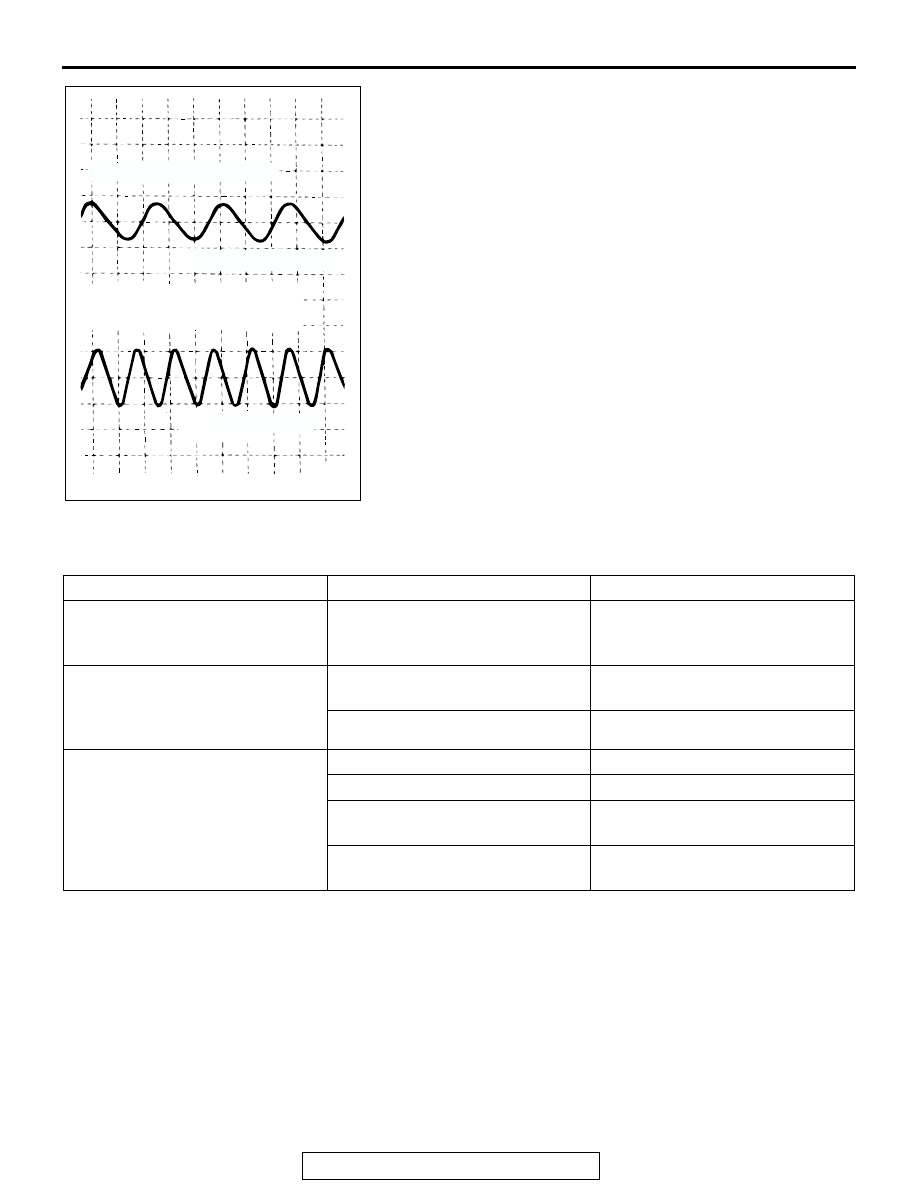Mitsubishi Galant (2004+). Manual - part 540

ON-VEHICLE SERVICE
TSB Revision
ANTI-LOCK BRAKING SYSTEM (ABS)
35B-105
3. Manually turn the wheel to be measured 1/2 to 1
turn/second. Measure the output voltage with a voltmeter or
oscilloscope.
NOTE: Check the connection of the sensor harness and
connector before using the oscilloscope.
Output voltage:
• Minimal voltmeter reading: 42 mV
• Maximum voltmeter reading: 300 mV
• Minimal oscilloscope reading: 120 mV
• Maximum oscilloscope reading: 600 mV
Probable causes of low output voltage
• Wheel speed sensor pole piece-to-wheel speed rotor clear-
ance too large
• Faulty wheel speed sensor
4. To observe the waveform with an oscilloscope:
• Front Wheels: Shift into "D" range and drive the wheels.
• Rear Wheels: Turn the wheels manually at a constant
speed
NOTE: The output waveform is low when the wheel speed is
low. Similarly, it will be higher as the wheel speed increases.
Waveform may also be observed by driving the vehicle.
.
POINTS IN WAVEFORM MEASUREMENT
NOTE: The wheel speed sensor cable moves in relation to motion of the front or rear suspension. Therefore,
it is likely that it has an open circuit only when driving on rough roads but it functions normally when driving on
smooth roads. It is recommended to observe sensor output voltage waveform also under special conditions,
such as driving on a rough road.
AC000949 AC
WHEN TURNED MANUALLY
IN "D" RANGE, IDLING
[5
− 6 km/h (3 − 4 mph)]
[10.0 ms/DIV 1 V/DIV]
[10.0 ms/DIV 1 V/DIV]
SYMPTOM
PROBABLE CAUSE
REMEDY
Too small or zero waveform
amplitude
Faulty wheel speed sensor or
excessive gap between it and the
wheel speed rotor
Replace wheel speed sensor
Waveform amplitude fluctuates
excessively (This is no problem if
the minimum amplitude is 100 mV
or more)
Axle hub eccentric or with large
runout
Replace hub assembly
Faulty ABS-ECU ground
Repair harness wires
Noisy or disturbed waveform
Open circuit in wheel speed sensor Replace wheel speed sensor
Open circuit in harness
Repair harness wire
Incorrectly mounted wheel speed
sensor
Mount wheel speed sensor
correctly
Wheel speed rotor with missing or
damaged teeth
Replace wheel speed rotor